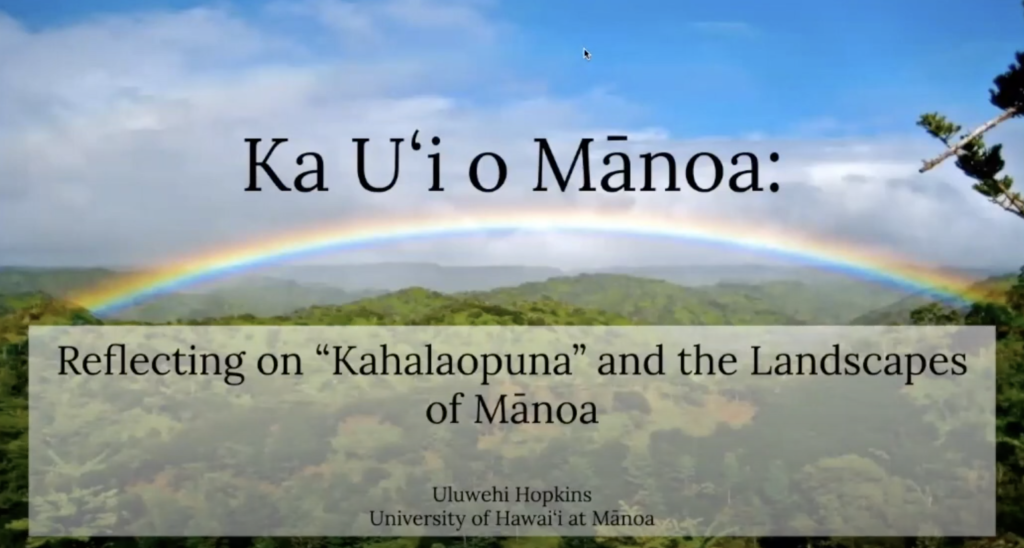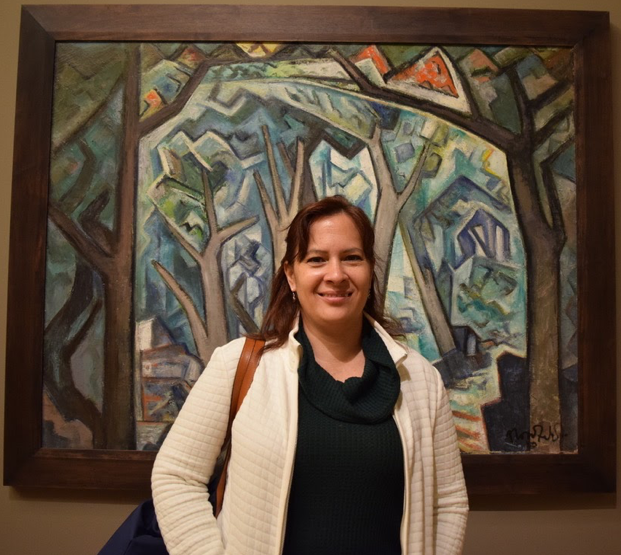Kahaukani Conversations – Ka Uʻi o Mānoa

Missed our last Kahaukani?
Watch the recording!
MHC’s strategic plan for the next few years is based on a commitment to inclusion, relevance, and sustainability. Transforming into an organization of, by, for the community requires a multi-pronged approach and we are looking forward to seeing how these different initiatives take shape (we’ll tell you more about our participation in the OF/BY/FOR ALL Change Network later).
This summer, MHC docents participated in a virtual training that focused on MHC’s story from a multicultural perspective. Making space for historically marginalized voices to emerge is a critical part of making MHC more inclusive and reflective of the community we serve. Topics included Hawaiian cultural values, lessons learned from Hawaiian language newspapers and archives including the history of epidemics in Hawaiʻi, and the Chinese and Japanese immigrant experience in the valley. In many ways, this is just the beginning of an organizational shift to better understand a more complete story of Mānoa and the people associated with it.
We were fortunate to spend time with Uluwehi Hopkins, a Ph.D. Candidate in UH’s History Department, during a recent Kahaukani Conversation. Uluwehi provided a provocative perspective on the popular moʻolelo of Kahalaopuna as published by Emma Kailikapuolono Metcalf Beckley Nakuina (someone every Mānoa valley resident should know about!).

Uluwehi asked: Why is the original story so violent especially when very few Hawaiian moʻolelo feature domestic violence? Why would a Hawaiian tell this story? Why would a Hawaiian tell this story at this point in history? After going through different published versions of the moʻolelo and background on Emma Nakuina’s life, Uluwehi introduced her thesis that, although fluent in Hawaiian, Emma Nakuina published in English and used her skill and notoriety to criticize the aggressive maneuvering of haole in the Hawaiian kingdom through the use of kaona (n. Hidden meaning, as in Hawaiian poetry; concealed reference, as to a person, thing, or place; words with double meanings that might bring good or bad fortune).
Curious? Watch Uluwehi’s Kahaukani Conversation below. You can also read her Master’s thesis Moʻolelo as Resistance: The Kaona of “Kahalaopuna” in a Colonized Environment
Kahaukani Conversations is made possible with support from:
Atherton Family Foundation
G. N. Wilcox Trust
Island Insurance
Mālama Mānoa

I came across an article in an old Hawaiian nupepa that tells of Kahalaopuna living in Pauoa near the Mormon church at the same time Kaahumanu was living in Manoa near the Waioli tea house. Stuffs happen, between the time of Kauhi’s “death” and when she finally forgets Akaka’s warning and goes to the ocean. E kama’ilio paha kaua